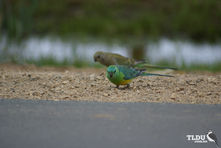
Shoppers Feedback:
Jan 17, 2017
Hello Ros,
I have now paid the invoice, but I would like to write to you just to say a big THANK YOU for getting me the Penguin!
The ChatterMate Penguin became a nice memory for me when I was in New Zealand, and I am so greatful to you for arranging so that I could have it! :-)
Thank you so much!!!!!!!!!!!
Regards,
Malin
Hi Ros,
Many thanks for your very kind email. I really appreciate your prompt reply!
I appreciate your advice regarding the decorations and customs. These are a gift for my daughter’s exchange student family so when she returns home on the weekend I will show her and see if she loves them as much as I do!
Thanks so very much again - I am truly grateful for your kind assistance.
Kind Regards
Bernadette
Ros,
Thanks again for the great customer service. It's a refreshing change!
Best regards,
Trevor
Hey Roz,
Thank you for your emails. Just loved my first order. The cute little Aussie bush critters are going to be used for an office Christmas decoration. My colleagues also liked them and talked about making an order to your site. I'll send you a photo when completed.
I'll be ordering more to send to my daughter's host family in America.
Fabulous service from you.
Kind regards,
Michelle
Thankyou. Order arrived today. One very happy grandson with his new beastly binoculars.
Regards,
Irene
- Home
- Wild Wonders
- Shop
- Aromas of Australia
- Australian Made
- Books
- Book Marks
- Christmas Decoration Sale
- Christmas Decorations
- Clocks
- Drink Holders
- Garden & Outdoor
- Gift Wrapping & Cards
- Home & Giftware
- Jewellery
- Keyrings
- New Products
- Pencils & Pen Holders
- Photo Frames
- Plush Toys
- Plush with Sound
- Sheepskin Rugs
- Stationery
- Stone Carvings
- Toys & Games
- Travel Goods
- Wedding
- Wild Figurines
- Wildlife Safety Products
- Wind Chimes
- Wine Charms
- View All Products
- Wildlife
- Australiana
- Explore
- Contact Us
Turquoise Parrot

Quick Facts
| Length: | 21 cm |
| Height: | - |
| Weight: | 40 grams |
| Colour: | - |
| Habitat: | Open, grassy woodland with dead trees near permanent water. Coastal heaths and pastures with exotic |
| Food: | Seeds of grasses and shrubs and flowers, nectar, fruits, leaves and scale-insects |
| Predators: | - |
| Status: | Vulnerable in NSW. Near threatened in VIC.Secure in QLD. Not Present in NT, SA, TAS & WA |
The male Turquoise Parrot is bright green above, with a turquoise blue crown and face. A brilliant two-tone blue band around the bend of the wing contrasts with a dark, brick-red shoulder patch. Its underparts and tail edges are a rich yellow. The female is similar, but not as bright, with a whitish facial mask, no red on the wing, and a pale wing stripe. Old birds of both sexes may have orange underparts.
The Turquoise Parrot is similar to the Scarlet-chested Parrot. It is the females which could most easily be confused, as the males are more distinctive. The female Scarlet-chested Parrot has a more extensive cobalt-blue face than the female Turquoise Parrot.
The Turquoise Parrot is found from south-eastern Queensland, through New South Wales to eastern and north-eastern Victoria. The range was formerly more extensive.
The Turquoise Parrot favours open, grassy woodland with dead trees near permanent water. It also inhabits coastal heaths and pastures with exotic grasses and weeds, along roadsides and in orchards.
Turquoise Parrots are generally resident in an area, but some local seasonal movement occurs.
Pairs or small parties of Turquoise Parrots forage mostly on or near the ground for seeds of grasses and shrubs. They also eat flowers, nectar, fruits, leaves and scale-insects.
The Turquoise Parrot nests in vertical or near-vertical hollows in living or dead trees. The eggs are laid on decayed wood-dust or fine wood-chips. Leaves and grass may also be brought to the nest by the female. She carries these by tucking them under the feathers on her rump. Sometimes two clutches are laid in a season. Only the female incubates the eggs, but she is fed by the male who will also later attend to the chicks.
The Turquoise Parrot is considered vulnerable in New South Wales, and threatened in Victoria, after having been considered extinct in the wild by 1915. The population began to recover by the 1920's. They had formerly been caught in large numbers for the cage bird industry, and were also shot for food, as a pie-filling. Their original habitat in western Sydney - the Cumberland Plain Woodland - is the most cleared of any vegetation community.
Last Updated: Thursday 18th July, 2013
BirdLife Australia - www.birdlife.org.au
BUSH e-TELEGRAPH
Signup for our monthly newsletter the "e-Telegraph"
Quick Links
Home | The Beginning | About The Land Down Under | Wild Wonders | Advertise on Wild Wonders | Christmas Decoration Sale | Christmas Tree Decorations | Drink Holders | Plush with Sound | Stone Carvings | Wildlife Wine Charms | Freebies | Australian Wildlife | Help Our Wildlife | Australiana | Photo of the Month | Explore The Land Down Under | Contact Us | Legal Notices

